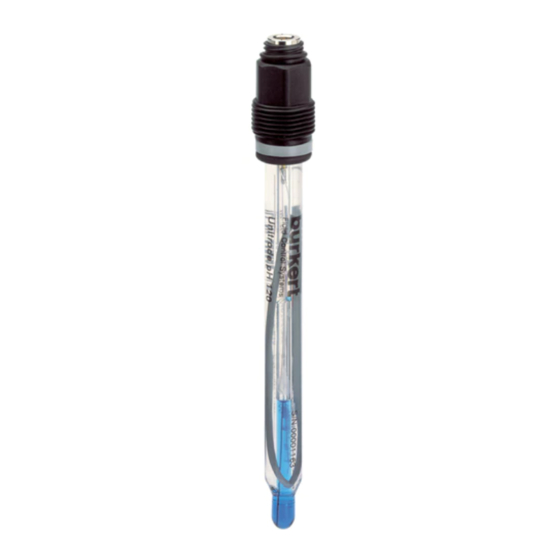
Table of Contents
Advertisement
Quick Links
We reserve the right to make
technical changes without notice.
Technische Änderungen
vorbehalten.
Sous réserve de modifications
techniques.
www.burkert.com
© Bürkert S.A.S, 2008-2017
Operating Instructions 1707/05_EU-ml_00560756
ABOUT THIS MANUAL ....................................................................3
SYMBOLS USED ................................................................................4
INTENDED USE ...................................................................................5
BASIC SAFETY INFORMATION ..................................................6
GENERAL INFORMATION ..............................................................8
DESCRIPTION ......................................................................................9
TECHNICAL DATA ........................................................................... 12
ASSEMBLY ............................................................................................ 21
MAINTENANCE ................................................................................. 23
PACKAGING, TRANSPORT, STORAGE ................................ 27
DISPOSAL OF THE PRODUCT ................................................ 28
English
2
Type 8203
pH probes or Redox potential probes
Operating Instructions
Bedienungsanleitung
Manuel d'utilisation
ABOUT THIS MANUAL
This manual describes the entire life cycle of the product.
Please keep this manual in a safe place, accessible to all
users and any new owners.
This manual contains important safety information.
Failure to comply with these instructions can lead to
hazardous situations.
• This manual must be read and understood.
English
3
3
Advertisement
Table of Contents

Subscribe to Our Youtube Channel
Summary of Contents for Burkert 8203
-
Page 1: Operating Instructions
Type 8203 pH probes or Redox potential probes We reserve the right to make technical changes without notice. Technische Änderungen vorbehalten. Sous réserve de modifications techniques. Operating Instructions www.burkert.com Bedienungsanleitung © Bürkert S.A.S, 2008-2017 Manuel d‘utilisation Operating Instructions 1707/05_EU-ml_00560756 ABOUT THIS MANUAL ABOUT THIS MANUAL ..............3... -
Page 2: Symbols Used
SYMBOLS USED INTENDED USE The following symbols are used in this manual: Use of the pH/Redox probe type 8203 that does not DANGER comply with the instructions could present risks to people, nearby installations and the environment. Warns you against an imminent danger. -
Page 3: General Information
You can find the user manual and technical data sheet formed, due to the hydrogen ions (H ), between the regarding type 8203 at: glass membrane and the solution. This difference in potential, measured in relation to a reference electrode, www.burkert.com... -
Page 4: Technical Data
TECHNICAL DATA LOGOTRODE pH Specifications common to all pH or Redox probe, • Type of fluid • clean the probes combined, 120 mm long • Measurement range • 0...14 pH with head PG 13.5, without • Fluid pressure • 0...6 bar temperature probe •... - Page 5 FERMTRODE pH VP PLASTRODE pH • Type of fluid • Fluids containing pro- • Type of fluid • drinking, aquarium or teins, cells culture or swimming pool water injection solutions • Measurement range • 0...14 pH • Measurement range • 0...14 pH •...
-
Page 6: Assembly
ASSEMBLY UNITRODE PLUS redox Safety instructions • Type of fluid • clean, contaminated, with low conductivity, DANGER containing sulphides or proteins Risk of injury due to high pressure in the installation • -2000...+2000 mV • Measurement range • Stop the circulation of fluid and depressurize the pipes •... -
Page 7: Packaging, Transport, Storage
When the fluid to be measured is aggressive, for example, - sulphurous precipitate (e.g. in purification stations): and/or the fluid temperature reaches high values, the use a mixture of diluted hydrochloric acid (10%) and lifespan of the probe may be shortened. pepsin (saturated) When the measuring conditions are favourable (e.g. -
Page 8: Disposal Of The Product
DISPOSAL OF THE PRODUCT → Dispose of the product and its packaging in an environ- mentally-friendly way. NOTE Damage to the environment caused by products contaminated by fluids. • Keep to the existing provisions on the subject of waste disposal and environmental protection. Note Comply with the national and/or local regulations which concern the area of waste disposal.














Need help?
Do you have a question about the 8203 and is the answer not in the manual?
Questions and answers